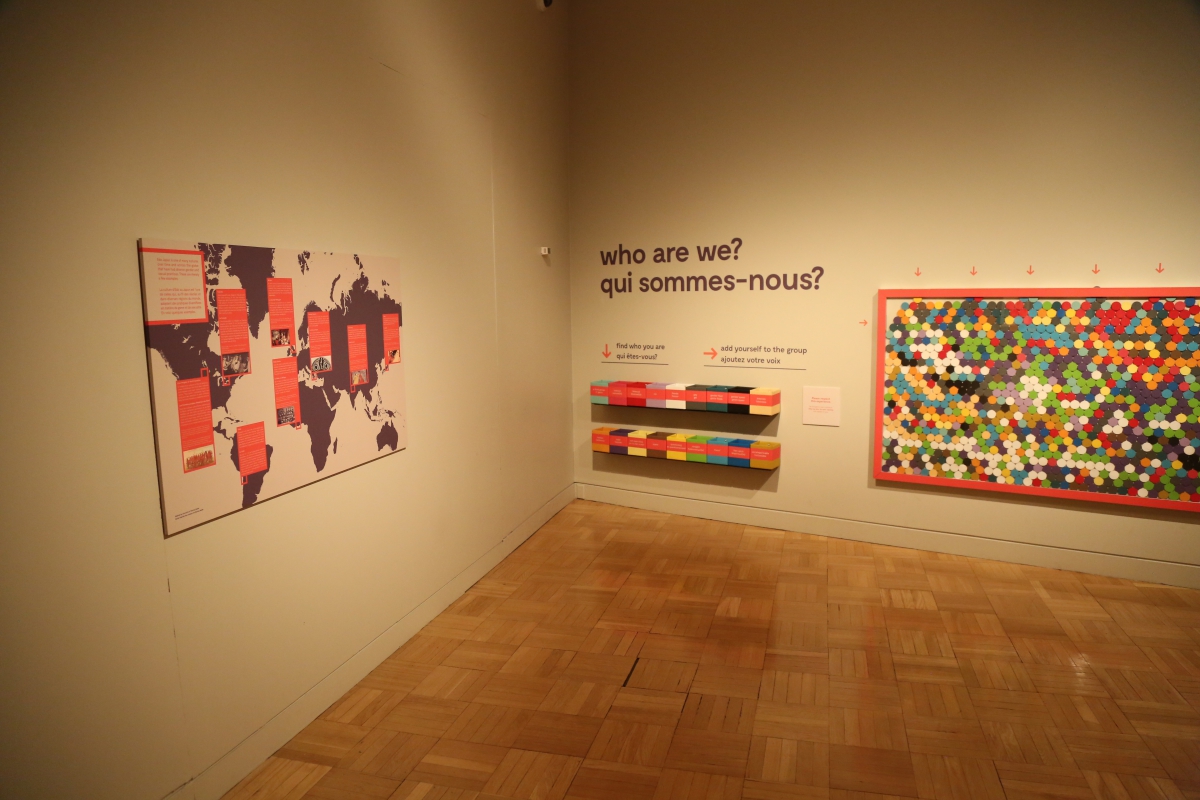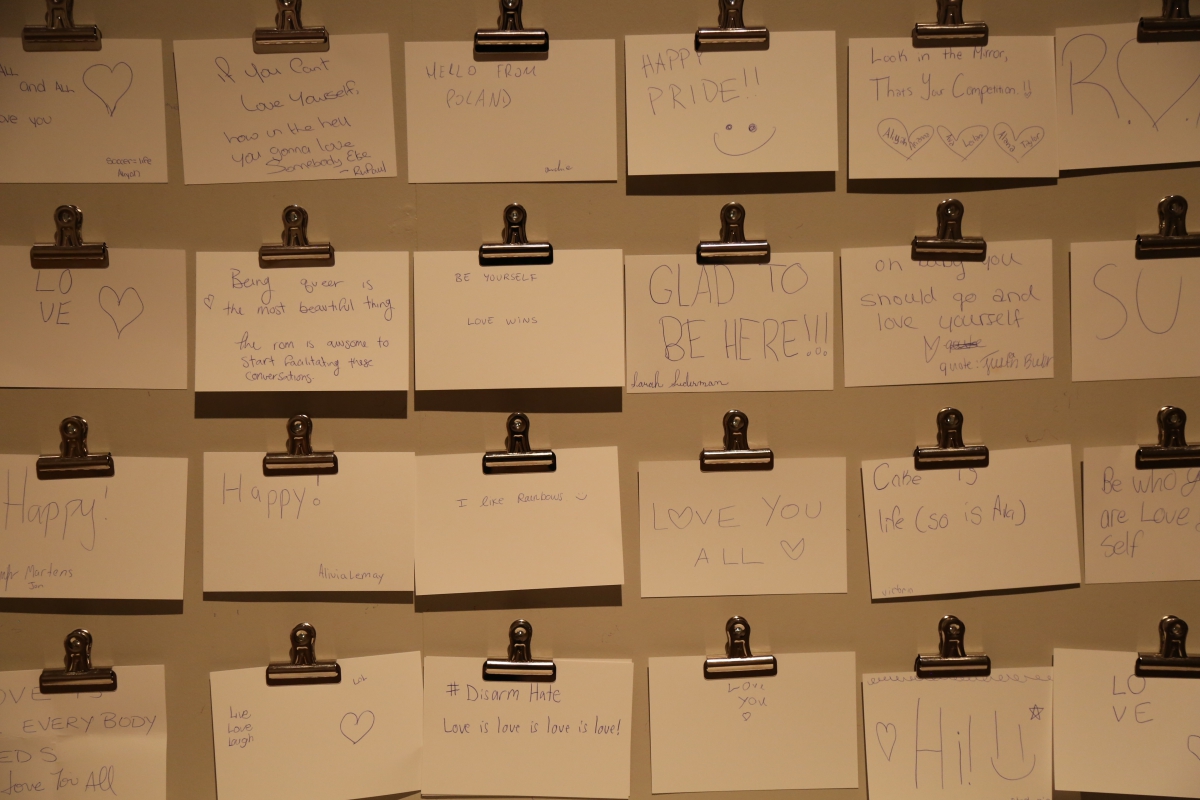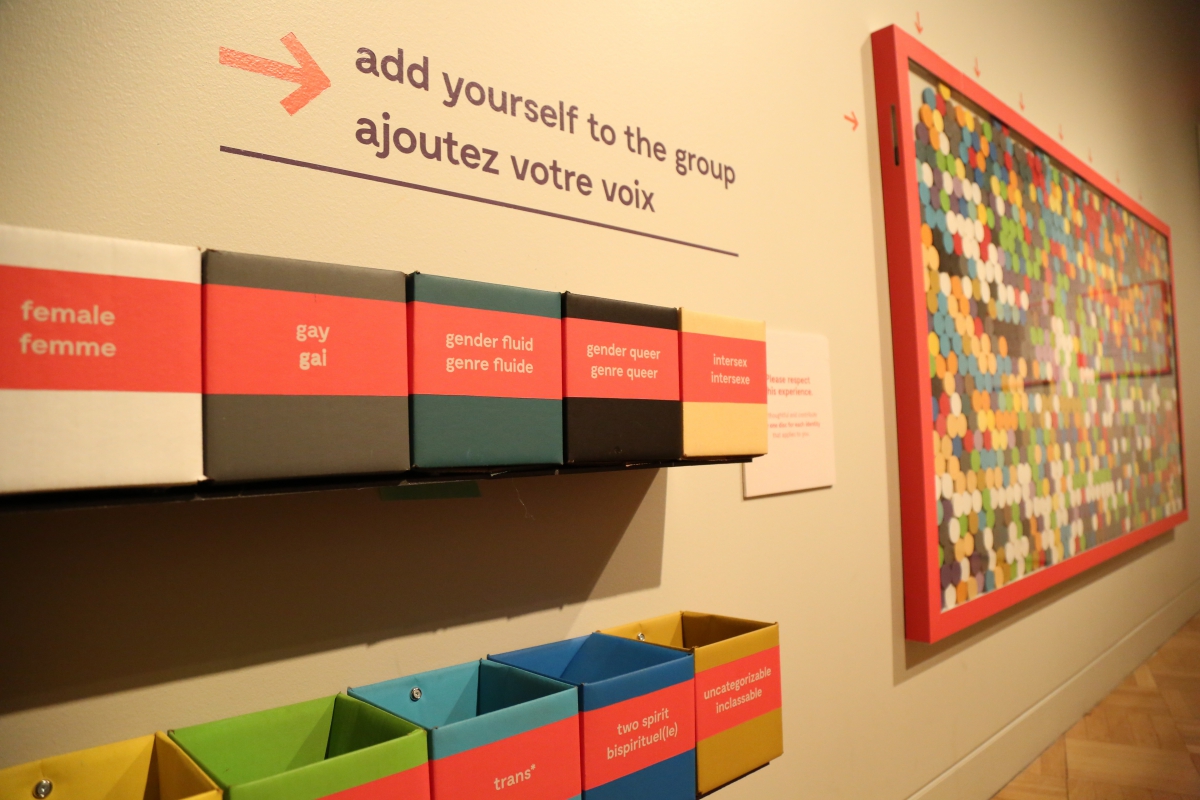The A Third Gender exhibition and LGBTQ community workshop
By Asato Ikeda
On January 23 this year, the A Third Gender exhibit team and the Mark Bonham Center for Sexual Diversity Studies at the University of Toronto co-hosted two workshops with members of Toronto’s LGBTQ (Lesbian, Gay, Bisexual, Trans, and Queer) community. We invited educators, social workers, and political activists, and I gave a presentation on the exhibition, which was followed by a discussion session.
The idea for the exhibition was received favorably, and the fact that it is a large public museum like the ROM that is putting on this show was welcomed enthusiastically. There were some issues raised by the participants, especially by members of the Trans community. They included the use of language, pronouns in particular. Some asked, for example, whether wakashu should be referred to as “he” if they were indeed a “third gender.” They were especially cautious about using the pronoun “she” for onnagata, who behaved like women both on and off stage. The other big concern was about washrooms in the museum, which still retained the strict division between men and women: it was pointed out that washrooms remain a place where many Trans people experience discrimination. Many workshop participants concurred that a space that addresses issues around sex, gender, and sexuality in contemporary society is necessary and would enhance the topic of the exhibit.
The exhibition team’s dialogue with the LGBTQ community was enlightening and essential to our exhibition planning process. The team tried its best to incorporate feedback from the community as much as possible, while negotiating with the museums’ institutional policies and need for scholarly accuracy. As a scholar, whose argument needs to be grounded in research and historical evidence, I still think wakashu and onnagata should be referred to as “he,” as they are in historical documents, but I avoided using pronouns in the exhibition (the exhibition catalogue had already been submitted to the press by the workshop, so the pronouns are maintained in the catalogue). Also, the team obtained necessary permissions from the museum’s senior managers to make the washroom adjacent to the A Third Gender exhibition space an “all-gender washroom,” which has received considerable media attention (http://www.cbc.ca/news/arts/rom-gender-neutral-washrooms-1.3589399). Most importantly, the team decided to display a global map that shows examples of diverse gender and sexuality practices that have existed across time and cultures, including two-spirited people of indigenous cultures in North American, hijras in India, the LGBTQ movement in Canada, and the nineteenth-century British Victorian ideal of gender binarism and heteronormative sexuality. The museum benefited from collaborative work with Davina Hader for the map (Read about Davina’s important work at http://www.dailyxtra.com/canada/news-and-ideas/news/new-ontario-curriculum-sexuality-and-gender-51588).
An interactive display at the very end of the exhibition asks visitors to choose coins (from such categories as “female” “male” “trans*” “two-spirited” “uncategorizable”) to create a colorful mosaic that represents the diversity of gender identity and sexual orientation in our own society today. Visitors can also leave comments on the exhibit, and as they leave, they will find a list of Toronto’s LGBTQ resources on the wall.
The exhibit team is deeply grateful for the participation of LGBTQ community members in the January workshops and for the precious feedback and comments we received. I believe their ideas made the exhibition more interesting and engaging, and hope that the A Third Gender exhibit marks a beginning of a continuing dialogue between the LGBTQ community and the ROM.
Happy Pride!

Photo by Lance McMillan

Photo by Lance McMillan

Photo by Lance McMillan
